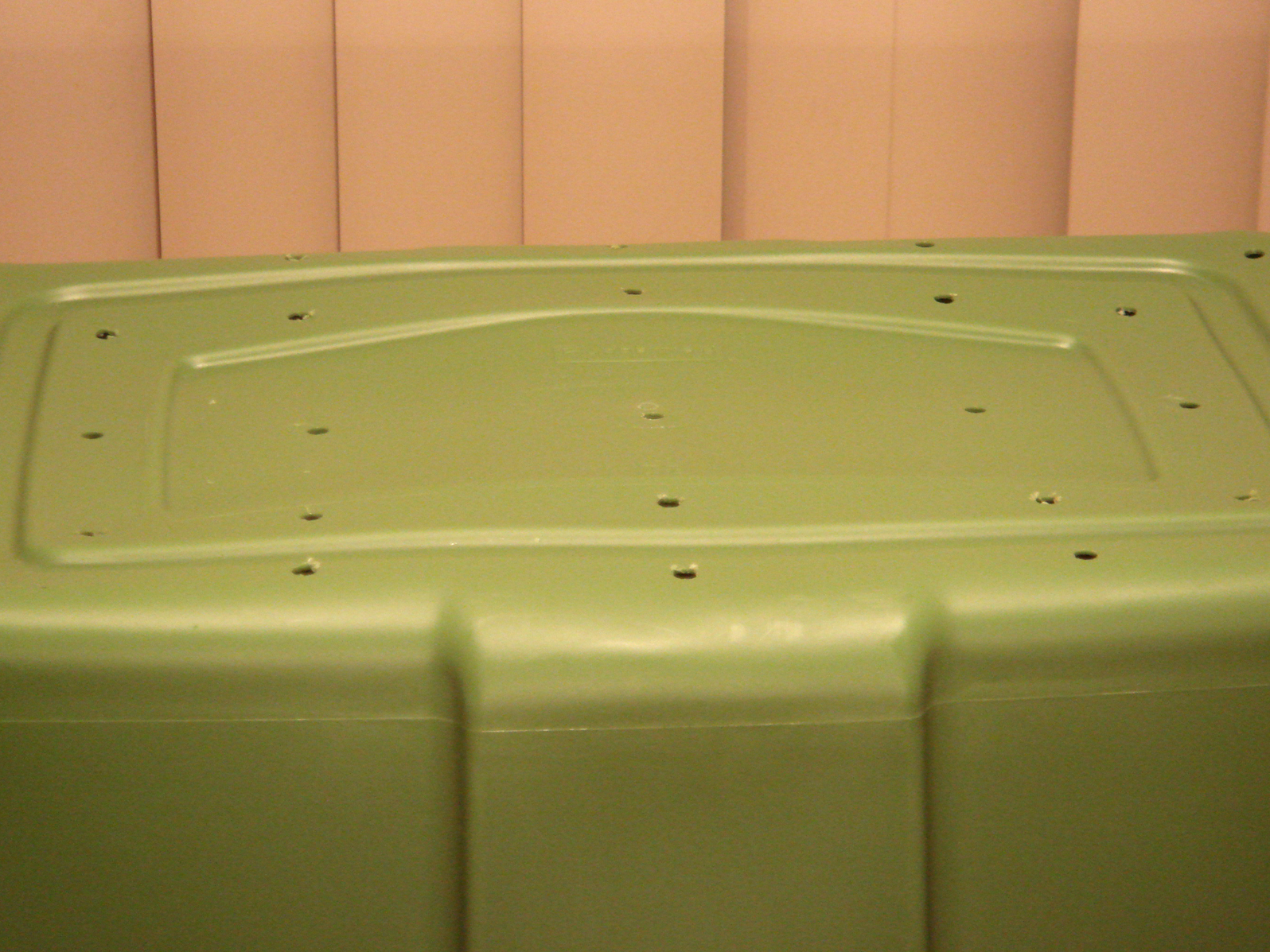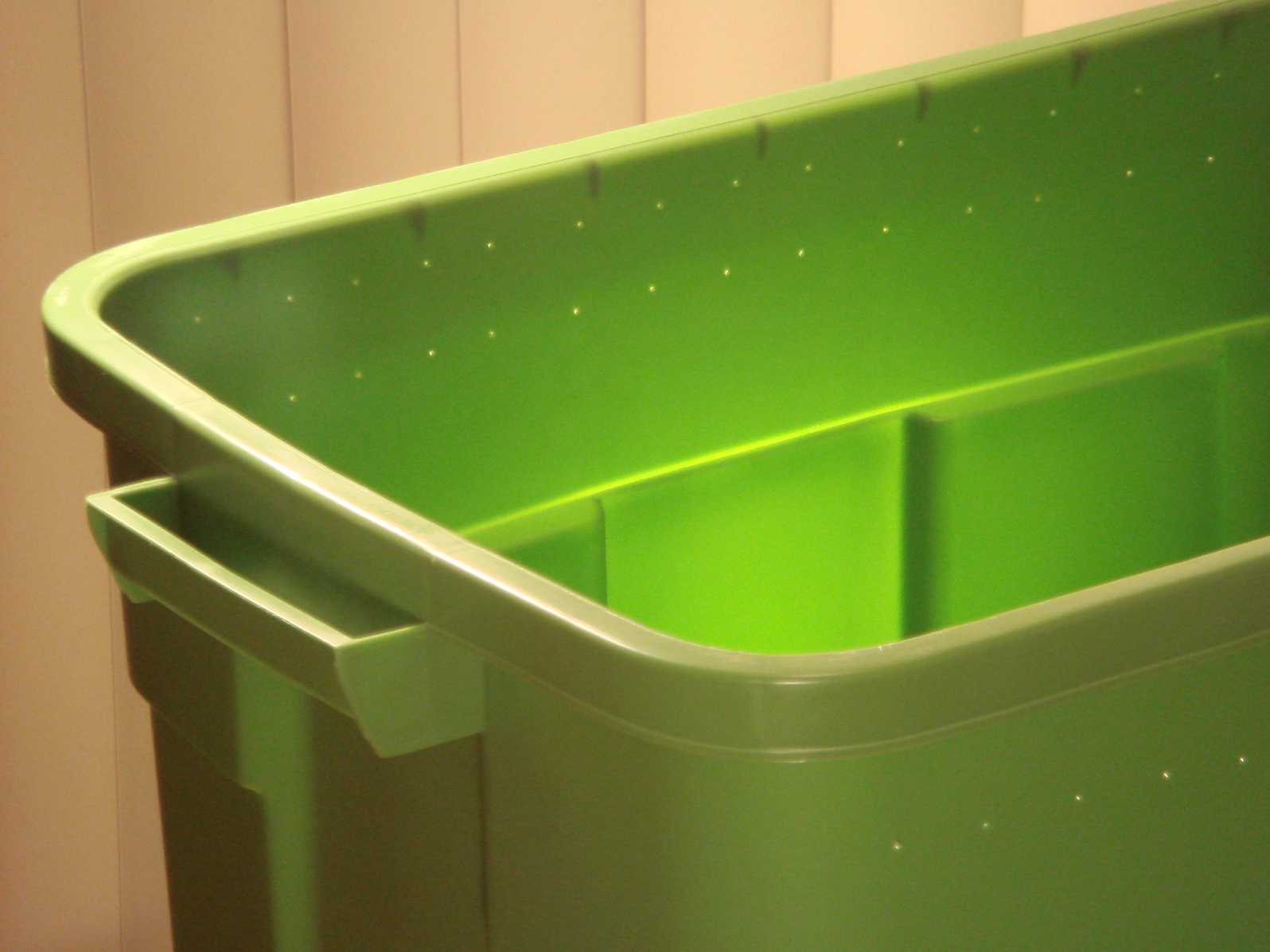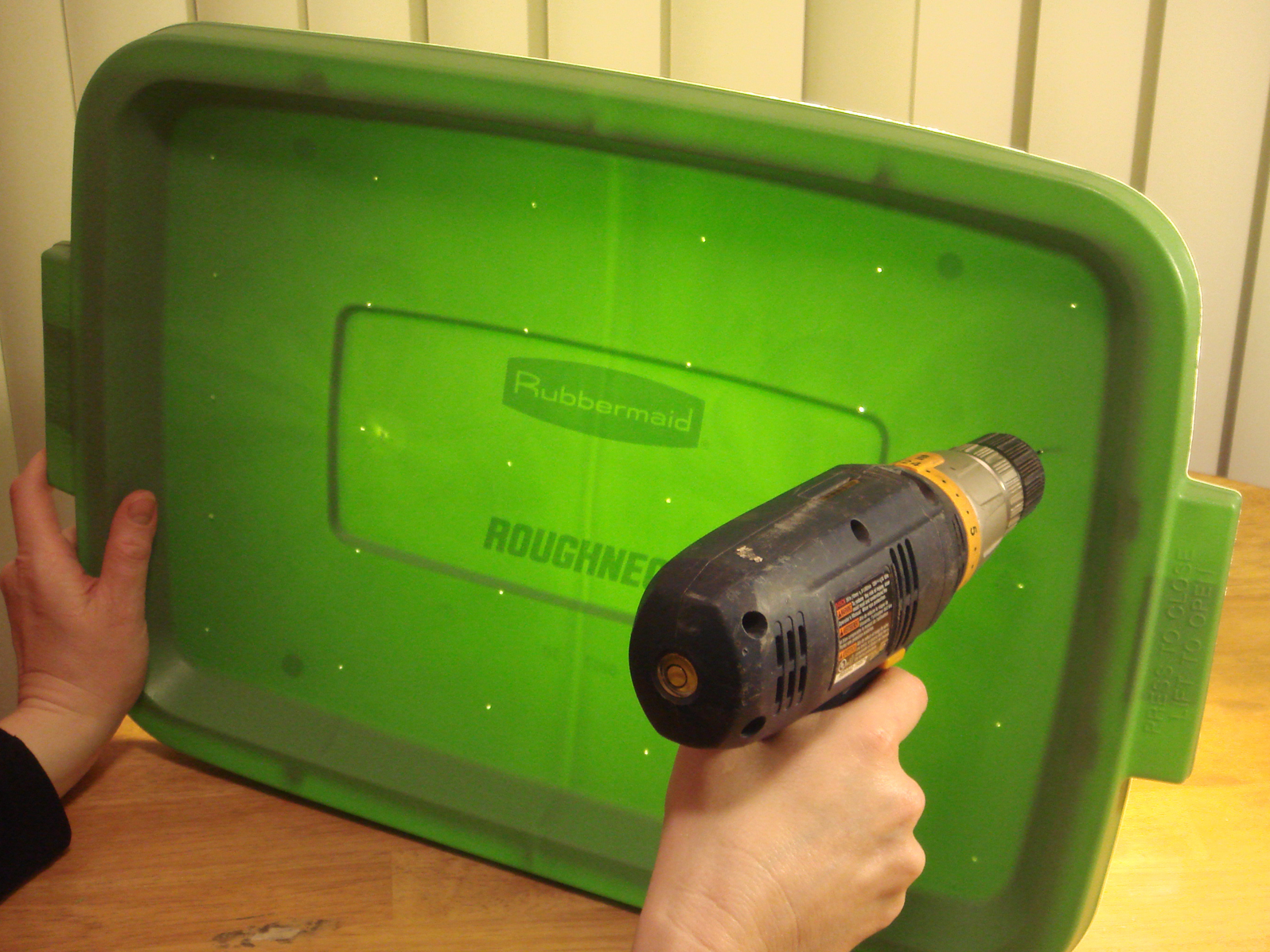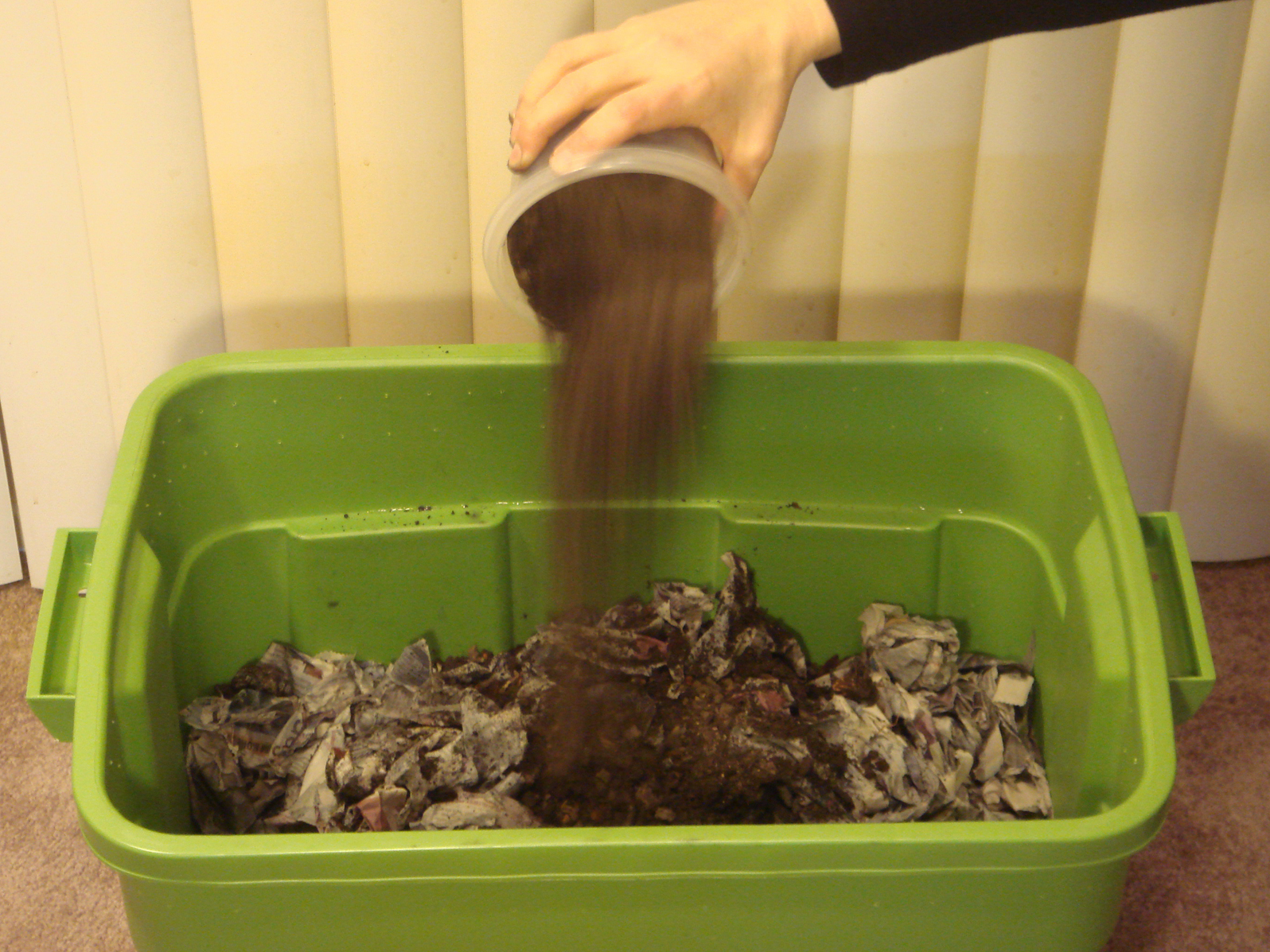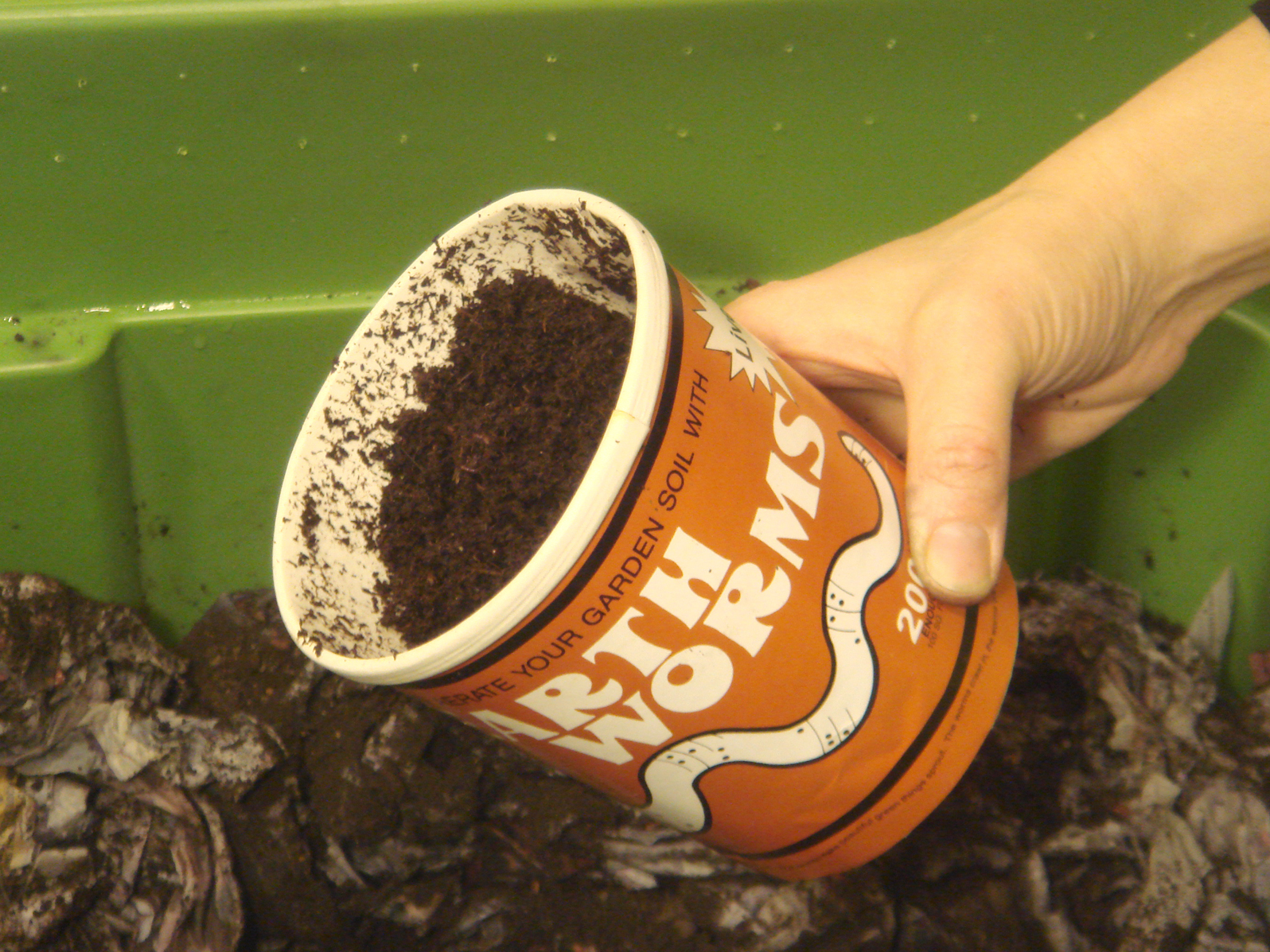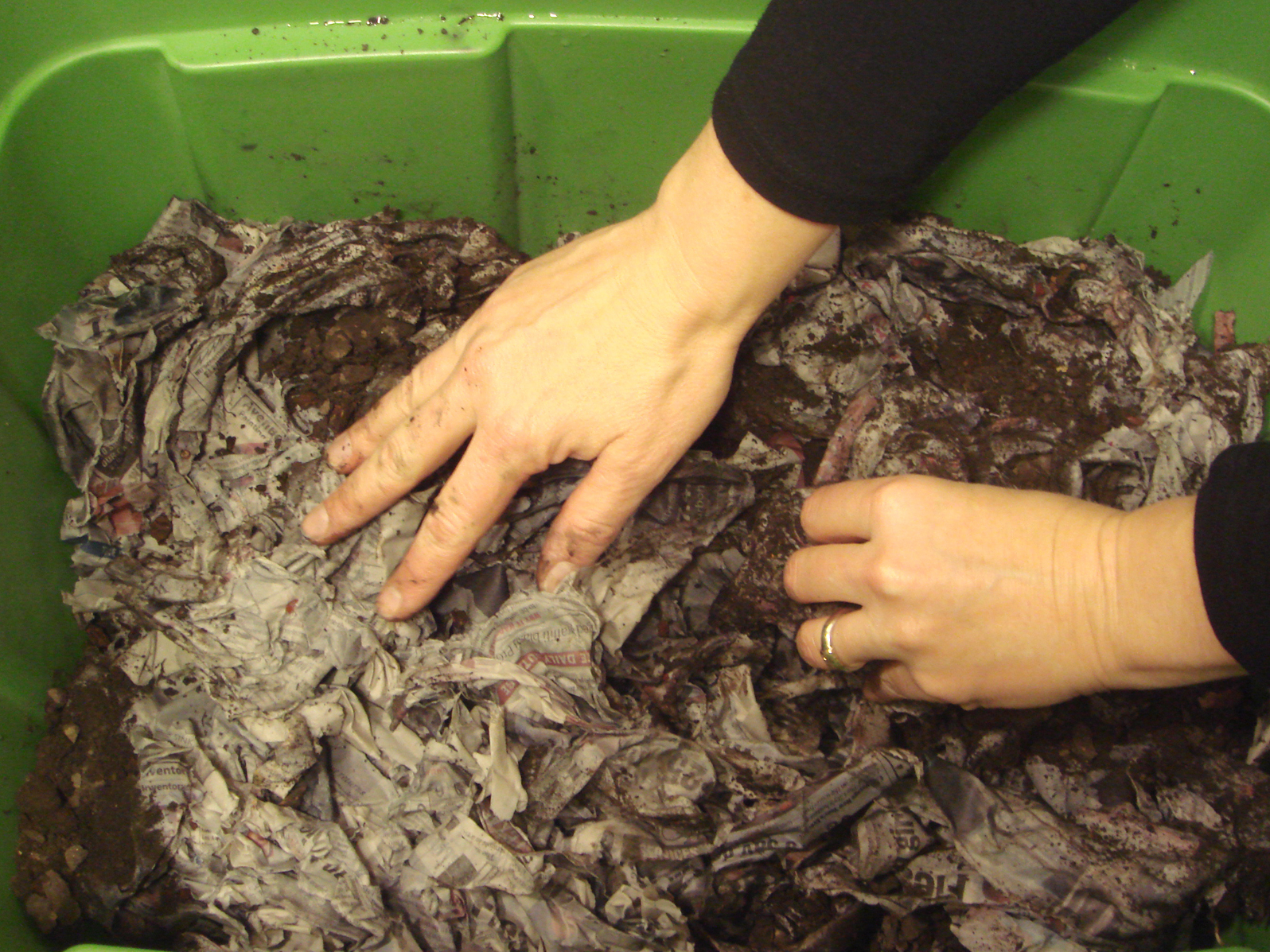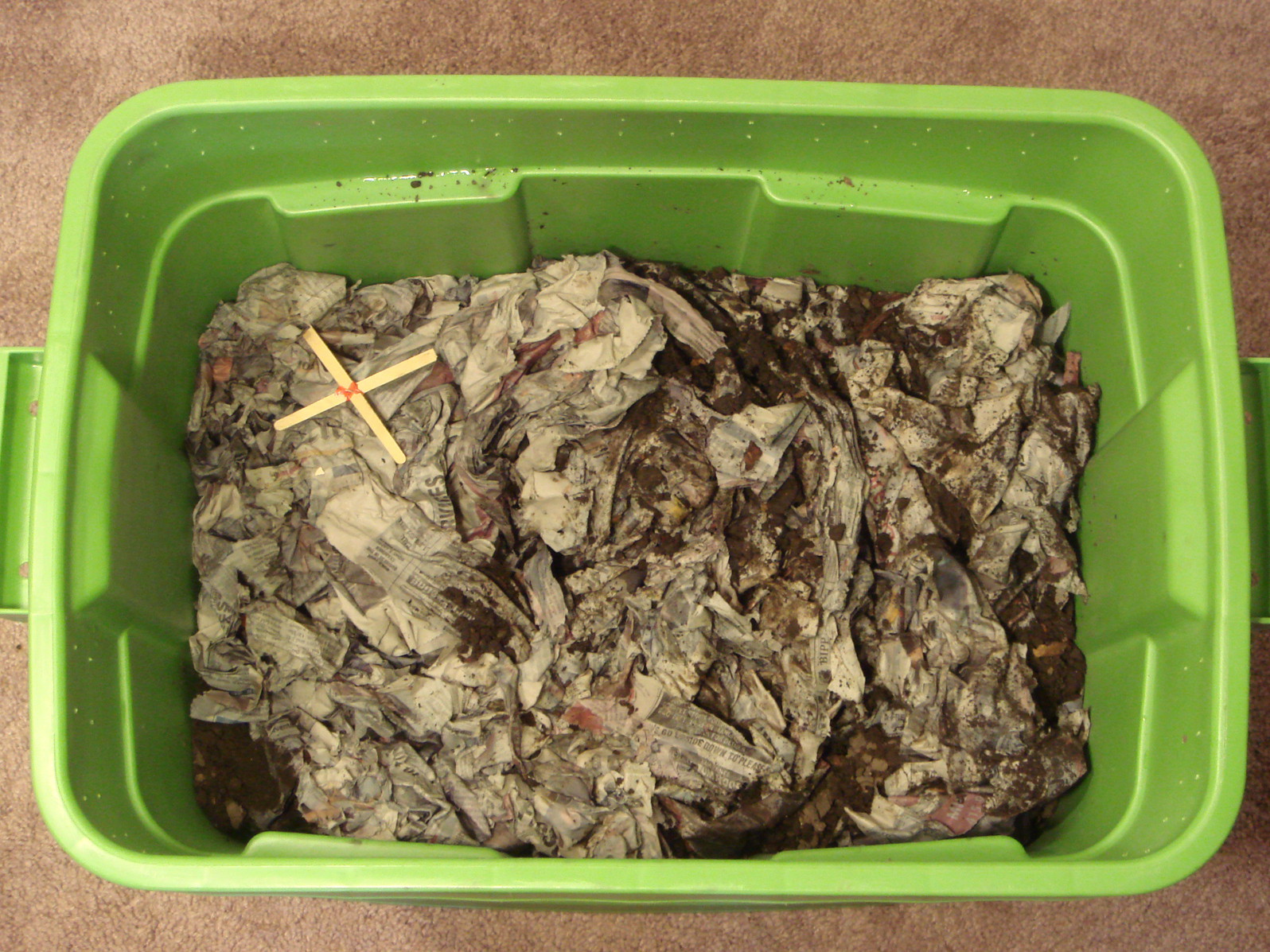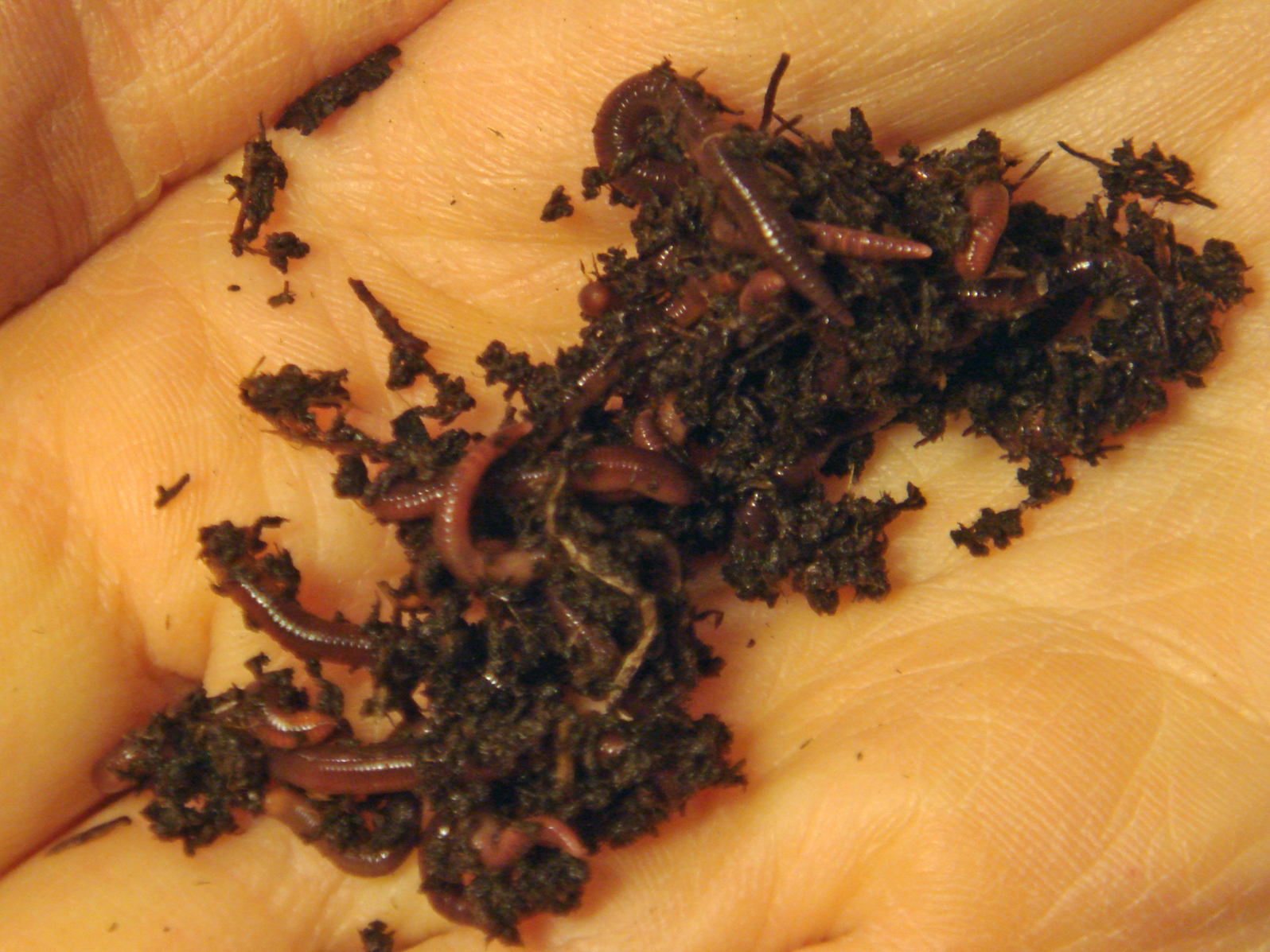For three years I lived in a house with an outdoor composter. Then my family moved to an apartment in San Francisco where there was neither composter nor green box pickup! What was I going to do with all my kitchen scraps? I didn’t have the heart to put them in the landfill garbage or down the garb-o-rator.
According to the EPA, in 2007 organic-based materials continued to be the largest component of municipal garbage in America: 33% was paper and cardboard, and 25% was yard trimmings and food scraps. I could put my paper and cardboard in the recycling bin, but without a yard, how could I recycle my apple cores, cabbage trimmings, and eggshells? Then I remembered worms.
Worm composters are great for apartments. No matter the climate or the size of your home, vermicomposting is good for you. Well, good for your plants. If you have children, there’s the added advantage that most kids love worms (it’s genetic), despite the fact that they’re not very cuddly or furry.
My 4-year-old son is fascinated by worms: from our outdoor composter he’d already learned that worms turn kitchen scraps into soil as if by magic.
Soil is extraordinary stuff, and despite the fact that it’s as vital as water, it’s still not fully understood by scientists. But we do know that we’re losing soil to erosion and runoff, and that composting can help restore soil, save landfill space, and reduce greenhouse gas emissions.
Worm composters are simple to build and easy to manage. Your worms can convert 5–6 pounds of food scraps a week into 10–15 gallons of compost a year.
Worm compost and worm tea (the drippings that collect in a tray at the bottom of the composter) can be used to fertilize both indoor and garden plants. Worm compost is higher in nutrient value than regular garden compost.
I’m looking forward to happy plants and less waste in my garbage cans, and so can you!



